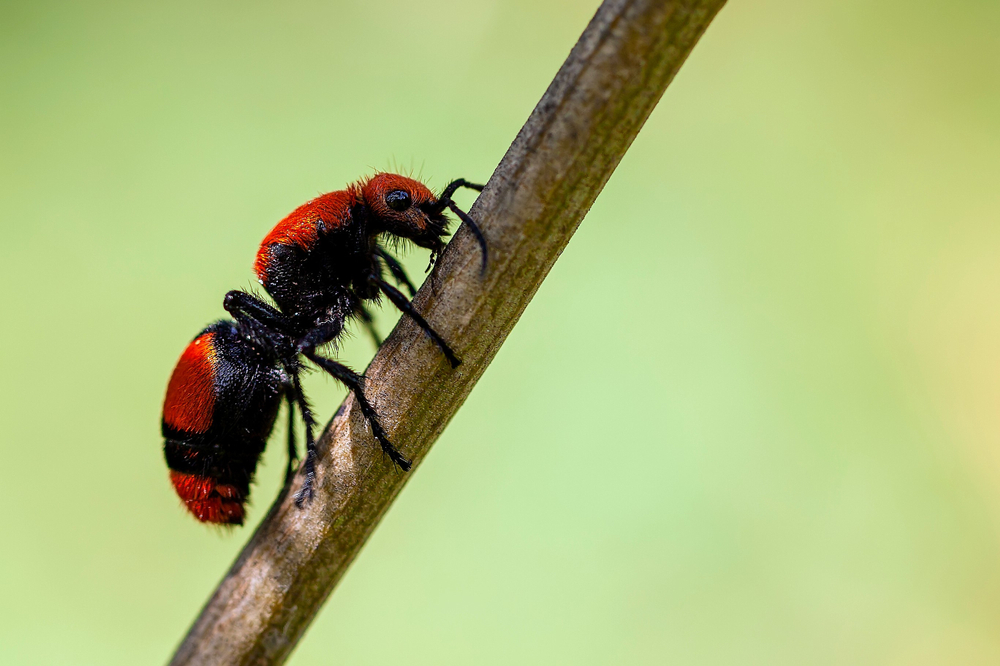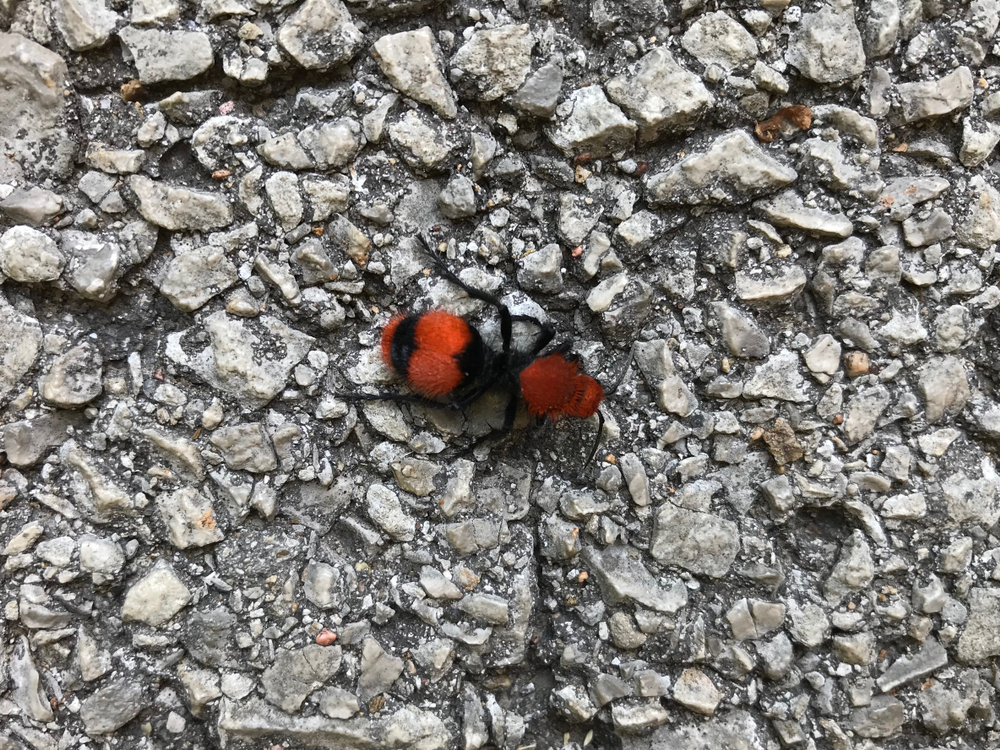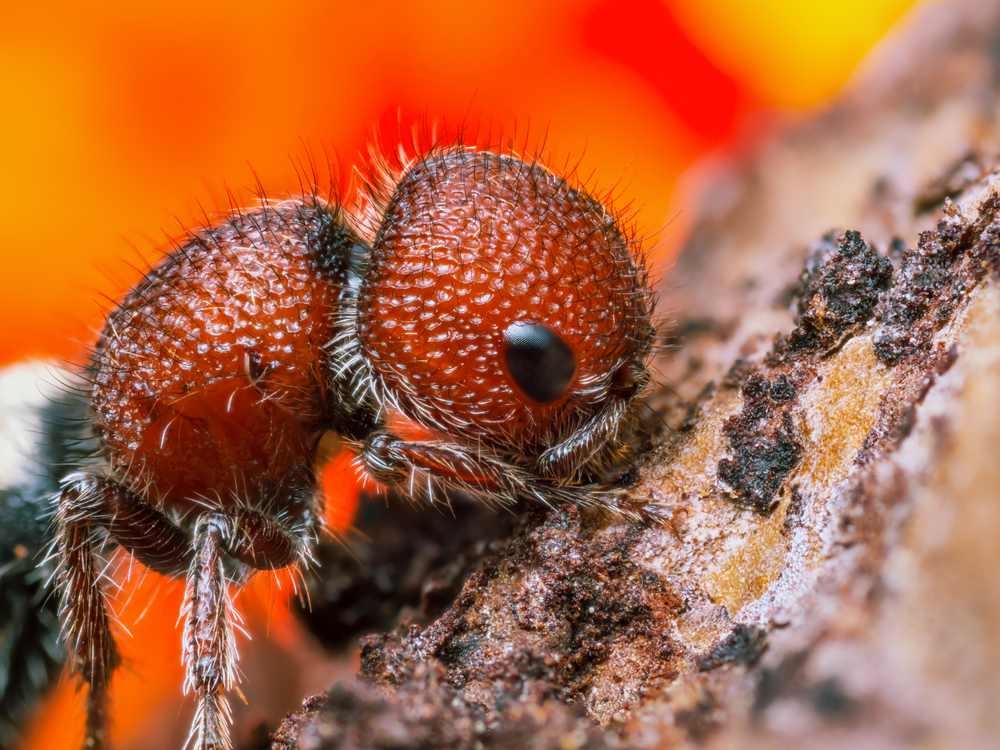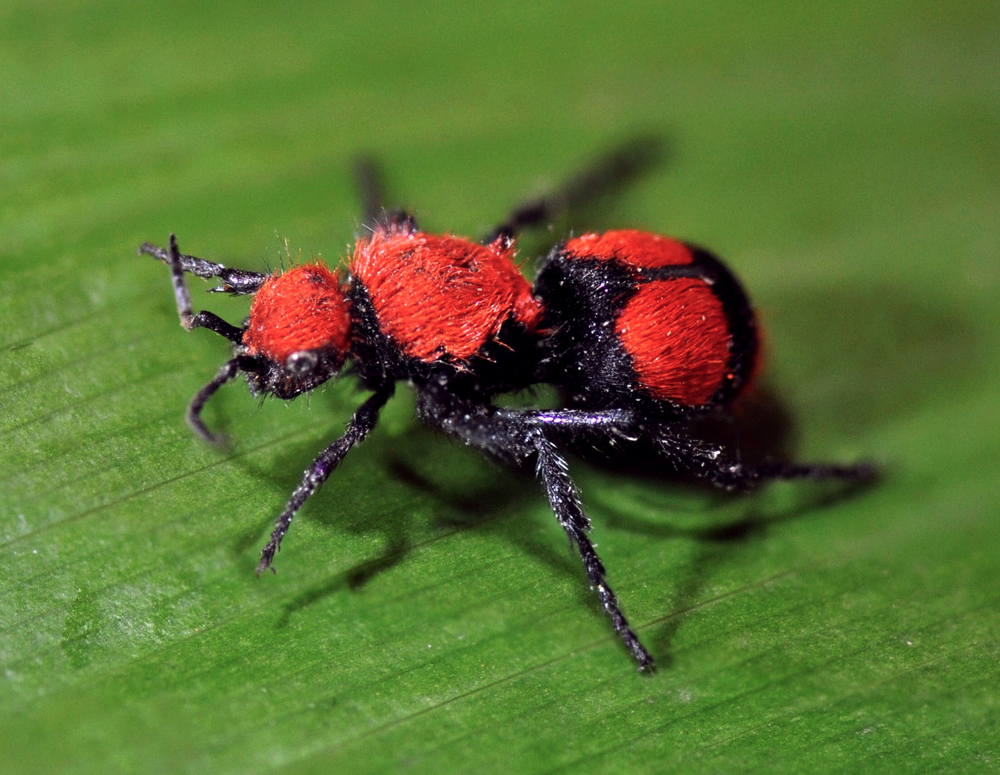Velvet ants, which are actually wasps belonging to the family Mutillidae, comprise a large and diverse group. There are over 3,000 described species of velvet ants across the world. These species vary greatly in size, color, and habitat.
Velvet ants are known for their extremely painful sting (hence the nickname “cow killer” for some species) and their strikingly colorful and fuzzy appearance, which is where the name “velvet” ant comes from. Despite their appearance and name, it’s important to remember that they are not true ants but rather a type of solitary wasp. The females are wingless and often mistaken for ants, which contributes to the common name. The males do have wings and are less commonly seen.
The diversity of velvet ants reflects the wide range of habitats they occupy, from deserts to tropical forests, and their varied life cycles and behaviors. They are mostly solitary and many are parasitoids or parasites of other insect species, laying their eggs in or on the larvae of hosts like bees and other wasp species.











































































